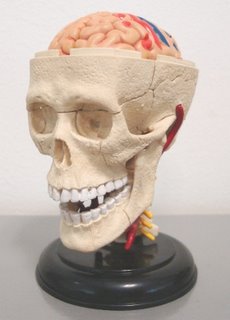 I still remember the smell of the medicated oil and the whirring sound of the generator.
I still remember the smell of the medicated oil and the whirring sound of the generator.The year is 1984.
I was a little boy accompanying my grandmother to a mobile clinic providing traditional Chinese medical services such as Tui Na and acupuncture to the elderly.
It was just a simple van packed with various medicated oils and powered by a portable generator. My grandmother suffered from chronic joint aches and was consulting the TCM practitioner there. So I sat on a stool at the car park and waited while she was being treated.
I could not have known at the time, but right then two very powerful people were having an important discussion. The Prime Minister of Singapore Mr. Lee Kuan Yew and the Director of the MRC Laboratory of Molecular Biology at Cambridge Dr. Sydney Brenner had this conversation -
Dr. Brenner: "You must have an institute of molecular cell biology where people can be trained in research. You can't do biotechnology without it."
Mr. Lee: "We are a nation of technicians."
Dr. Brenner: "If you do not take up this path, you will remain a nation of technicians forever."
The Institute of Molecular Cell Biology (IMCB) was established three years later with little fanfare, signaling a modest beginning to Singaporean science. This new institute provided job opportunities for an early batch of Singaporean scientists.
One of them (who is now an associate professor) once lamented to me that research positions practically did not exist prior to IMCB. He worked as a manager in a media company before an opportunity arose to do science at IMCB, and he has been doing research ever since.
While IMCB and the universities have been steadily producing good science for years, the Life Science endeavour really took off only at the turn of the century.
With the completion of the American-led Human Genome Project just on the horizon, in Sept 2000 the chairman of the National Science and Technology Board (NSTB) Mr. Philip Yeo announced that the 21st century would be a "biocentury" filled with exciting new opportunities for bio-industry.
The life sciences will be the next wave in Singapore's economy. Local universities began to offer life science degree programs in 2002. Construction began in late 2001 on a new, multi-million dollar research complex called Biopolis, slated for completion in 2003.
There was much excitement among the general public about this new vision.
But I was rather worried. Around that time, the dot.com boom has enticed many young people to take up computing and engineering, only to face unemployment when the bubble burst. Will the life science endeavour suffer a similar fate?
To be continued...






4 Comments:
I don't think quote-unquote true scientific endeavors will face the same fate as the dot-com crash-down. Science and discovery are lasting elements whereas there are only so many online casinos and mailing lists a person can stand.
the purpose of singapore's pursue in biotechnology together with the committment from government will determine if this new interest of biotech is sustainable advantage or simple another bubble.
I think the life sciences have a long way to go before there's a bubble bursting. For life sciences, there's a customer (the aging population) ... while the dot-com bubble burst simply because there was no money and no real customers.
To queenv, anon and anita:
Thanks for your insights! I'm really busy this week so I'll be addressing those points in Part II next week.
Post a Comment